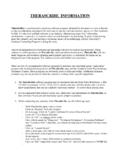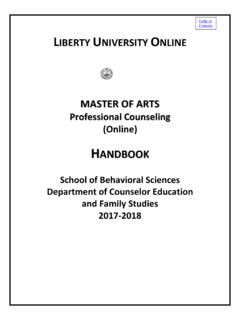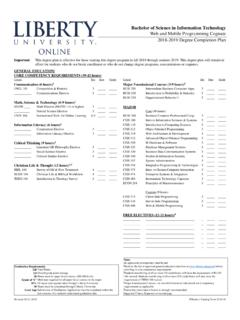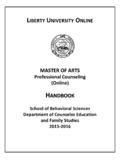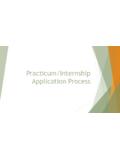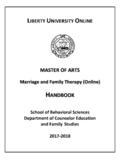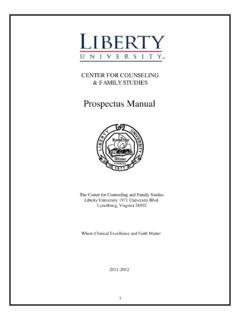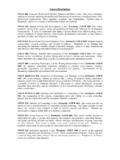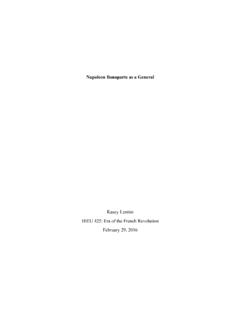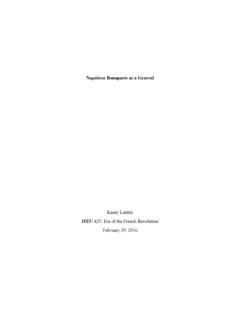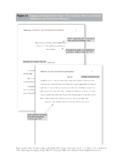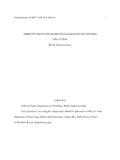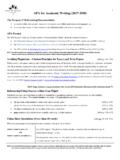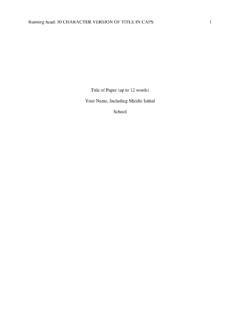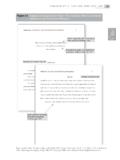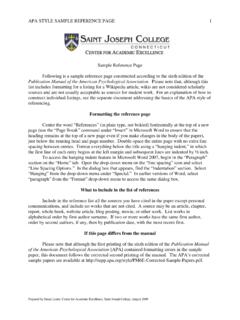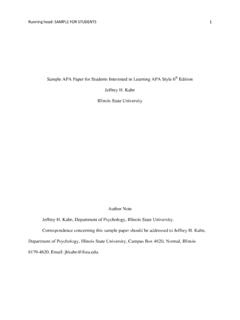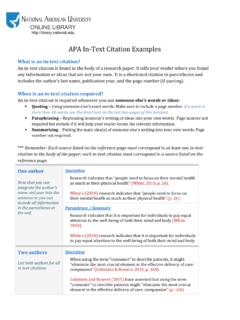Transcription of Writing Center’s webpage: course title and section, the ...
1 Running head: SAMPLE paper 1 A Sample paper for the Purpose of Correct Formatting Student Name Liberty University Per the Publication Manual of the American Psychological Association (APA; 6th edition), double-space the entire paper (p. 229), except with charts or tables. Do not add any extra spacing. Use Times Roman, 12-point font. Do not use bold except for headings as necessary (see page 62 of your APA manual). Margins are set for one inch on top, bottom, and sides. All page references will be to the APA manual, 6th edition. Add two spaces after punctuation at the end of each sentence, except in the reference list, for the sake of readability (pp. 87-88). The header on the cover page is different from the headers on the rest of the paper . Only the cover page header includes the words Running head (without the italics; p. 41). The header is flush left but the page numbers are flush right (see bottom of p. 229). Make sure the header font is the same as the rest of the paper .
2 Handouts on how to format the cover page (as well as other handouts) are available on the Online Writing Center s webpage: , and a superb YouTube video demonstration that provides visualized step-by-step instructions for setting a paper up in proper APA format is available at Note: Comments inside boxes are not part of the formatting of the paper . Section or page number references to the APA manual are denoted in parentheses throughout. Most citations within the body of this paper are fictional, for instructional purposes only, but are also included in the reference list for illustrative purposes of correlating citations in the body of the paper with resources in the reference list.. Note: Center the following information in the top half of the page: title , your name, and school name ( , p. 23; 41). Some professors require the course title and section, the instructor s name, and the date; add those on the lines beneath the required title page information. Do not use contractions in formal papers in either the title or the body of the paper ( , use do not rather than don t ).
3 Titles should include no more than 12 words. Titles use upper and lowercase letters ( , title case; , p. 23; see also on pp. 101-102). Prepared by Christy Owen, Brian Aunkst, and Dr. Carmella O Hare. Last updated June 28, 2016. SAMPLE paper 2 Abstract Begin your abstract at the left margin ( on p. 27; see also p. 229). This is the only paragraph that should not be indented. Unless otherwise instructed, APA recommends an abstract be between 150 250 words (p. 27). It should not contain any citations or direct quotes. This should be a tight, concise summary of the main points in your paper , not a step-by-step of what you plan to accomplish in your paper . Avoid phrases such as this paper will, and just structure your sentences to say what you want to say. The following three sentences exemplify a good abstract style: There are many similarities and differences between the codes of ethics for the ACA and the AACC. Both include similar mandates in the areas of ----, ---, and.
4 However, each differs significantly in the areas of ---, ---, and ---. For more detailed information, see Writing an Abstract at This is just now at 168 words, so take a moment to eyeball how brief your abstract must be. Think of your paper as a movie, and the abstract as the summary of the plot that you would share to draw people s interest into wanting to come and see your movie. Same thing: you want to really hook and intrigue them. What you have to say is important! Still only at 221 words here; remember to try to stay under 250, unless your professor advises otherwise. The keywords noted below highlight the search terms someone would use to find your paper in a database; they should be formatted as shown (indented , with the word Keywords in italics, and the few key words in normal print, separated by a comma. Keywords: main words, primary, necessary, search terms SAMPLE paper 3 A Sample paper for the Purpose of Correct Formatting The title of your paper goes on the top line of the first page of the body.)
5 It should be centered, unbolded, and in title case (all major words usually those with four+ letters should begin with a capital letter) --- see figure on p. 42 and on pp. 101-102. You can either give a brief introductory paragraph below that or go straight into a Level 1 heading. In APA format, the Introduction never has a heading (simply begin with an introductory paragraph without the word "Introduction"); see first paragraph of section on page 27, as well as the first sentence under the bolded headings on page 63 of your APA manual (American Psychological Association [APA], 2010). As shown in the previous sentence, use brackets to denote an abbreviation within parentheses (third bullet under ). Write out acronyms the first time mentioned, such as American Psychological Association for APA, and then use the acronym throughout the body of the paper ( ; note the section on underuse, however, at the top of p. 107). Basic Rules of Scholarly Writing Most beginning students have difficulty learning how to write papers and also format papers correctly using the sixth edition of the APA manual (APA, 2010).
6 However, the Liberty University Online Writing Center s mission includes helping students learn how to be autonomous, proficient writers, and thus this sample paper is designed so it cannot be used as a template for inserting the correct parts. For the purpose of instruction, this paper will use second person (you, your), but third person (this author) must be used in most student papers. First person (I, me, we, us, our) is not generally permitted in scholarly papers. Students should refrain from using first or second person in academic courses (even though the APA manual appears to encourage this in other Writing venues) unless the assignment instructions clearly permit such (as SAMPLE paper 4 in the case of personal reflection sections or life histories). Though some written assignments will not require an abstract, understand that APA generally requires one unless otherwise stated in your assignment instructions or grading rubric. Heading Levels Level 1 This sample paper uses primarily one level of headings (Level 1), so each heading presented herein is centered and in boldface.
7 APA style, however, has five heading levels, which will be demonstrated briefly for visual purposes. See page 62 of your APA manual (APA, 2010) if employing more than one level. Level 1 headings are bolded and in title case capitalize each major word (usually those with four or more letters), including hyphenated compound words. Four-Year Pilot Study on Attachment Disorders, and Self-Awareness of Pollen are examples of headings with compound words. Do not capitalize articles (a, an, the) in headings unless they begin a title or follow a colon. Level 2 Heading Level 2 headings are bolded, in title case, and left-justified. The supporting information is posed in standard paragraph form beneath it. Never use only one of any level of heading. You must use two or more of any level you use, though not every paper will require more than one level. Level 3 heading. Is bolded, indented , in sentence case (only the first word should begin with a capital letter in most cases), and ends with a period.
8 Add two spaces, then begin typing your content on the same line, as presented in this paragraph. Level 4 heading. Same as Level 3, except italicized, too. Level 5 heading. Same as Level 4, but unbolded. Despite heavy Writing experience, this author has never used Level 5 headings. SAMPLE paper 5 Annotated Bibliographies, Tables of Contents, and Outlines A few requirements in various assignments are not addressed in the APA manual, such as outlines, tables of content, and annotated bibliographies. APA does not regulate every type of paper , including those forms. In those cases, follow your professor s instructions and the grading rubric for the content and format of the outline or annotations, and use standard APA formatting for all other elements (such as running head, title page, body, reference list, 1" margins, double-spacing, Times New Romans 12-point font, etc.). That being said, when I organize outlines in APA format, I set my headings up in the proper levels (making sure there are at least two subheadings under each level), and then I use those to make the entries in the outline.
9 Level 1 headings become Roman Numbers (I, II, III), Level 2 headings become capital letters (A, B, C), Level 3 headings become numbers (1, 2, 3), and Level 4 headings become lowercase letters (a, b, c). Some courses require working outlines, which are designed to have the bones and foundational framework of the paper in place (such as title page, abstract, body with title and headings, and references), without all the supporting meat that fills out and forms a completed paper Appendices Appendices, if any, are attached after the reference list (see top of p. 230). You must refer to them in the body of your paper so that your reader knows to look there (see top of p. 39). The word Appendix is singular; use it to refer to individual appendices. I am attaching a sample Annotated Bibliography as a visual aid in Appendix A. You will see that I included the title Appendix A at the top of the page and formatted it in standard APA format beneath that. SAMPLE paper 6 Crediting Your Sources Paraphrasing is rephrasing another s idea in one s own words.
10 Quoting is using another s exact words. Both need to be cited; failure to do so constitutes plagiarism. Liberty University also has a strict policy against a student using the same paper (or portions thereof) in more than one class or assignment, which it deems self-plagiarism. Students who want to cite their own prior work must cite and reference it just like any other source; see example in Owen (2012). Include the author(s) and year for paraphrases and the author(s), year, and page or paragraph number for direct quotes. Page numbers should be used for any printed material (books, articles, etc.), and paragraph numbers should be used in the absence of page numbers (online articles, webpages, etc.; , pp. 171-172). Use p. for one page and pp. (not italicized in your paper ) for more than one. Use para. for one paragraph and paras. (also not italicized in your paper ) for two or more. For example: (Perigogn & Brazel, 2012, pp. 12 13) or (Liberty University, 2015 para. 8). Section of the APA (2010) manual says, When paraphrasing or referring to an idea contained in another work, you are encouraged to provide a page or paragraph number, especially when it would help an interested reader locate the relevant passage in a long or complex text (p.)
